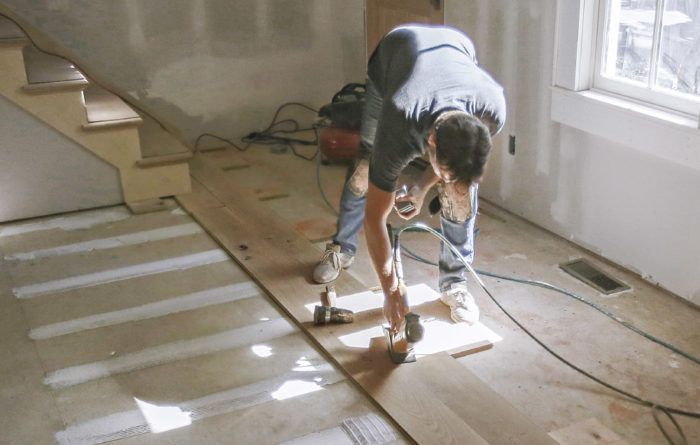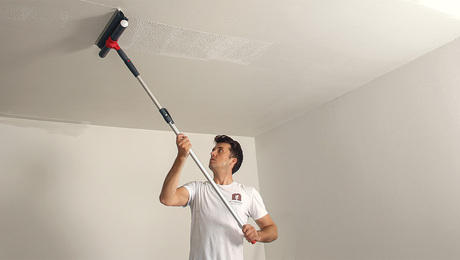Fine-Fitting Solid-Plank Flooring
A long-lasting, good-looking floor starts with a smart layout and strong fastening.

Wood floors hold a special place in the history of home building. In the past, master craftsmen might labor on the same floor for years, meticulously cutting each intricate inlay or pattern by hand. Even the rough, hand-scraped planks that floored the homes of wealthier commoners were still the result of a painstaking process.
Historically, wide-plank wood floors were milled with square edges from whatever wood was available on the property, and they were nailed directly to the joists. By wide, I’m talking 14 in. wide, and as these planks expanded and contracted with seasonal changes, so did the drafty cracks between them.
The wood-flooring industry as we know it today was revolutionized just before the turn of the 20th century. In 1885, a new milling machine — called a side-matcher — made blind-nailing possible by creating the first kiln-dried tongue-and-groove boards. In 1898, the end-matcher appeared; until then, ends had to fall on joists because subfloors were not in common use.
Because my company’s customers prefer a traditional look, most of the solid-wood floors we install are made of wide tongue-and-groove planks, but there is a price to pay: These plank floors cost at least 50% more than a typical 2-1⁄4-in. strip floor of the same grade. But nothing compares to the look of a plank floor’s broad field of wood grain underfoot (see “A Closer Look at Solid-Wood Flooring,” FHB #257).
We work with vendors who specialize in supplying the hardwood-flooring trade, which allows us greater creative control and less waste. The typical plank floorboard we work with is 8 ft. to 16 ft. long and 5 in. to 10 in. wide, side matched, and rough cut at the ends so we can square or end-match the boards on-site. When I order floorboards, I allow 10% to 15% for waste depending on the degree of complexity.
Drew Rydingsword is the founder of Franklin Hardwood Floors in Roxbury, Conn. Photos by Aaron Fagan.























View Comments
What about underlayment? Not needed for vapor barrier?